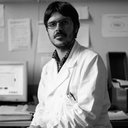The clinical spectrum of CASQ1-related myopathy.
Maneno muhimu
Kikemikali
OBJECTIVE
To identify and characterize patients with calsequestrin 1 (CASQ1)-related myopathy.
METHODS
Patients selected according to histopathologic features underwent CASQ1 genetic screening. CASQ1-mutated patients were clinically evaluated and underwent muscle MRI. Vacuole morphology and vacuolated fiber type were characterized.
RESULTS
Twenty-two CASQ1-mutated patients (12 families) were identified, 21 sharing the previously described founder mutation (p.Asp244Gly) and 1 with the p.Gly103Asp mutation. Patients usually presented in the sixth decade with exercise intolerance and myalgias and later developed mild to moderate, slowly progressive proximal weakness with quadriceps atrophy and scapular winging. Muscle MRI (n = 11) showed a recurrent fibrofatty substitution pattern. Three patients presented subclinical cardiac abnormalities. Muscle histopathology in patients with p.Asp244Gly showed vacuoles in type II fibers appearing empty in hematoxylin-eosin, Gomori, and nicotinamide adenine dinucleotide (NADH) tetrazolium reductase stains but strongly positive for sarcoplasmic reticulum proteins. The muscle histopathology of p.Gly103Asp mutation was different, showing also NADH-positive accumulation consistent with tubular aggregates.
CONCLUSIONS
We report the clinical and molecular details of the largest cohort of CASQ1-mutated patients. A possible heart involvement is presented, further expanding the phenotype of the disease. One mutation is common due to a founder effect, but other mutations are possible. Because of a paucity of symptoms, it is likely that CASQ1 mutations may remain undiagnosed if a muscle biopsy is not performed.


